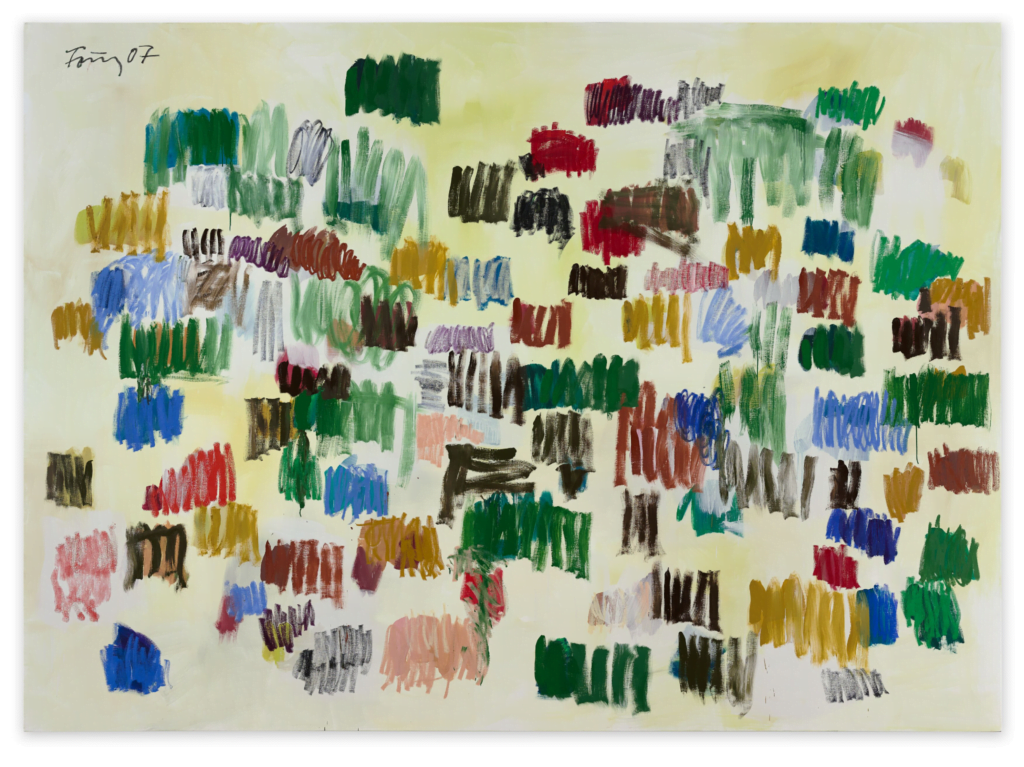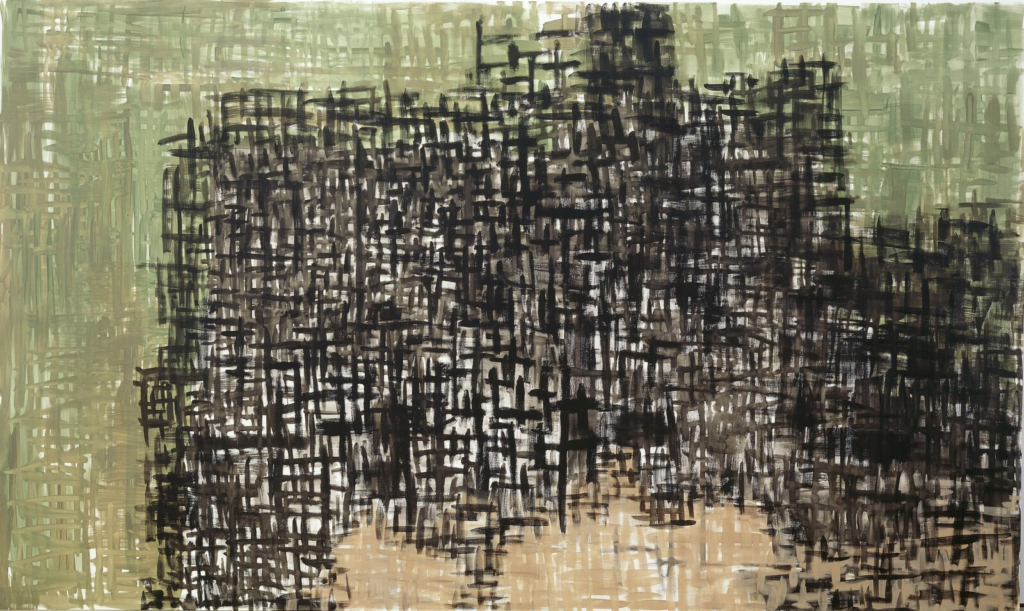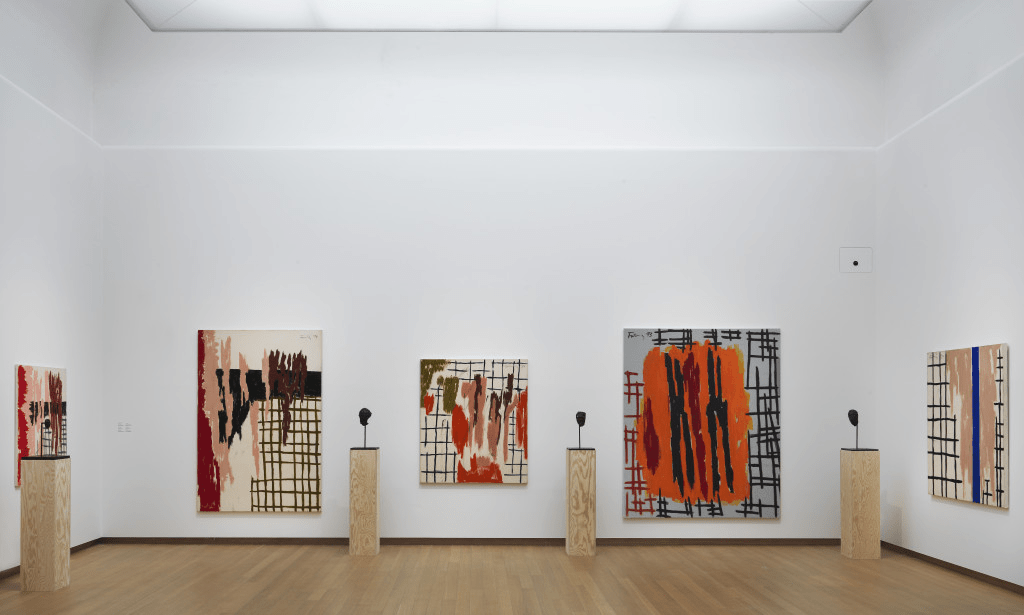Memoriesforart » Artists » Günther Förg

More Facts
Name: Günther
Surname: Förg
Lives & Works: Füssen
Lives in State: Bavaria
Nationality: Germany
Date of Birth: 1952
Date of Death: 2013
Period: Post-War
Movement: Abstract Art, Contemporary art
Table of Contents
As an art enthusiast, you may be familiar with the colourful grid paintings and minimalist sculptures of postmodern artist Günther Förg. However, you may not fully appreciate the scope of Förg’s creative output and the fascinating life experiences that shaped his artistic philosophy.
Throughout his prolific 40-year career, Förg experimented with various mediums and styles, from expressive abstract paintings and monochromatic lead paintings to photography and architectural installations. His diverse work provides insight into Förg’s complex views on Art, history, and identity in post-World War II Europe.
Günther Förg lived a life devoted to his artistic practice. Despite many personal struggles and setbacks, he persevered in honing his craft and developing a unique postmodern style. His prolific work spanning paintings, photographs, and sculptures provides a glimpse into his complex and enigmatic mind.
Though his Art was often criticized as too conceptual or abstract, Förg stayed true to his vision. His dedication to craft for Art’s sake and continual experimentation with form and medium has cemented his status as an influential figure in postmodern Art. Förg’s life serves as an inspiration, demonstrating the rewards of persevering in one’s creative pursuits against all odds. Though he is gone, his thought-provoking works live on, inviting us to slow down, look inward, and reconnect with the present moment.

Günther Förg was born in December 5, 1952 in Füssen, Germany. His father was a master carpenter, and his mother was a housewife. Förg grew up in a small Bavarian town, where he developed an early interest in Art.
Förg attended school in Füssen and showed talent in Art at a young age. His teachers recognized his ability and passion for Art and encouraged him to pursue it further. 1971, Förg began studying at the Academy of Fine Arts in Munich. There, he was influenced by professors such as Markus Lüpertz, who exposed Förg to various modern and contemporary art styles.
After graduating in 1976, Förg travelled extensively throughout Europe, visiting major art centers like Paris, Amsterdam and Venice. These travels and exposure to different art forms profoundly impacted his developing style. Postmodernist styles like Appropriation Art and Neo-Geo particularly influenced Förg.
In the late 1970s, Förg moved to Cologne, Germany and became associated with the Mülheimer Freiheit art group. His early paintings incorporated industrial materials and a reduced, minimalist style with subtle references to architecture and spatiality. Förg began gaining recognition for his unique postmodernist approach and use of industrial materials like lead and zinc plates.
Förg’s upbringing in a small Bavarian village and formal education at the Munich Art Academy, combined with his extensive travels throughout Europe, exposed him to various artistic styles that shaped his distinctive vision. From an early age, Förg demonstrated a gift for Art nurtured by his teachers and mentors, setting the stage for his successful career as a postmodernist painter.

As a prominent postmodernist painter, Günther Förg has had a lasting influence on contemporary Art. His abstract paintings explored form, colour, and materials in innovative ways that pushed the boundaries of traditional painting. A minimalistic and monochromatic style characterizes Förg’s paintings.
He frequently used lead white and gray hues, often painting on aluminum panels. These panels’ reflective, metallic surfaces were essential in creating his signature muted tones and textures. His paintings also used repetition of forms, with grids of squares or lines being common motifs. These repetitive forms and muted colours gave his works a sense of order, rhythm and calm.

As Förg developed his artistic style, he moved away from expressive paintings inspired by the Neo-Expressionist movement popular in the 1980s towards a minimalistic, conceptual style featuring repetitive geometric forms and a reduced colour palette.
In the late 1980s, Förg began experimenting with grid-like patterns and serial forms. He started limiting his compositions to just a few colours, often grayish blue, green and red hues. His paintings from this period feature repetitive marks, dots, lines and geometric shapes arranged in meticulous grids. These signalled a move from his earlier work’s expressive, textured style towards a pared-down, minimalistic aesthetic.
Förg was influenced by postmodern theories that questioned the concept of originality and emphasized repetition, appropriation and pastiche. His grid paintings explore seriality and repeat through the endless recombination of simple forms and subtle chromatic variations. They invite the viewer to meditate on the relationship between similarity and difference.
In the 1990s, Förg developed his signature cinematic style featuring mysterious, evocative photos silkscreened onto large canvases, often in diptych or triptych formats. His choice of images depicting details of storefronts, interiors or natural textures gives his work a sense of poetic abstraction. Förg skillfully blurred the boundaries between photography, printmaking and painting, combining mechanical reproduction with expressive brushstrokes and layers of drips and splatters.
Förg continued experimenting with different media and styles throughout his career, but his minimalistic, conceptual approach and fascination with serial forms endured. His oeuvre offers a profound meditation on perception, memory and the passage of time.
The materials and techniques Förg employed shaped his artistic legacy. His use of industrial materials like aluminum was groundbreaking and inspired other artists to experiment with nontraditional supports. The subtle textures and tonal variations he achieved with his minimal colour palettes and choice of materials demonstrated how captivating simplicity could be. His paintings conveyed emotion through the most basic of forms and colours.

During his prolific career, Günther Förg created many notable works demonstrating his postmodern style. Some of his most famous paintings include:
|
1984 |
Die Ungeborenen (The Unborn) |
This large-scale work features Förg’s signature grid-like pattern and minimalist style. The muted tones and indistinct forms represent his interest in the ambiguity of images. It is considered one of his most iconic paintings. |
|
1987 |
Ohne Titel (Untitled) |
This enormous canvas, measuring over 16 feet high, exemplifies Förg’s monumental approach to painting. The work is dominated by a giant red “X” against a gray background, demonstrating his use of simple geometric forms and industrial materials. |
|
1982-2002 |
Picture series |
Förg created paintings featuring photographs of lead pictures, which are used in offset printing. |
Later in his career, Förg gained widespread critical acclaim and recognition through major exhibits and honours.
|
Documenta IX |
In 1992, Förg was selected to participate in Documenta IX, a prestigious international art exhibition held every five years in Kassel, Germany. His work was featured prominently, bringing him greater exposure and recognition in the contemporary art world. |
|
Venice Biennale |
Förg represented Austria at the Venice Biennale, one of the most prestigious international art exhibitions. His paintings and sculptures were exhibited in the Austrian pavilion, garnering significant attention from critics and collectors. |
Förg received numerous accolades and honours recognizing his artistic achievements.
|
1987 |
Theodor Körner Prize |
|
1995 |
Grand Austrian State Prize, Austria’s highest award for the arts |
|
2000 |
Austrian Decoration for Science and Art |
Förg’s later career was marked by significant retrospectives at renowned museums, including exhibitions at:
Stedelijk Museum Amsterdam
Secession in Vienna
Kunstmuseum Bonn
These exhibits featured paintings, sculptures, drawings, and sketchbooks spanning Förg’s prolific career, demonstrating his mastery of postmodernist techniques exploring colour, geometry, and spatiality.